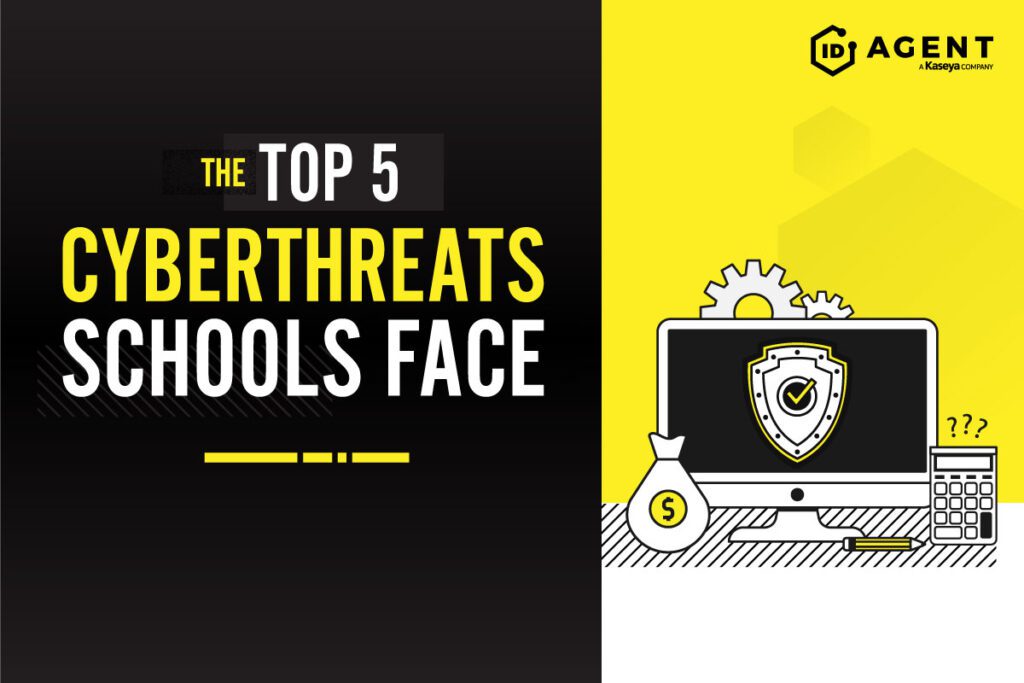How is AI Used in Cybersecurity?

The cybersecurity landscape is constantly evolving, driven by the increasing sophistication of cyberthreats. As organizations become more reliant on digital infrastructure, the need for robust and adaptive security measures has never been more critical. Enter artificial intelligence (AI) and machine learning (ML) — technologies revolutionizing how we approach cybersecurity.

Read our case studies and see how MSPs and businesses have benefitted from using our solutions. READ NOW>
Defining AI and ML helps clarify their purpose
AI and ML offer unparalleled capabilities in detecting, analyzing and responding to cyberthreats. Unlike traditional security measures that rely on predefined rules and signatures, AI and ML systems learn and adapt from data, making them exceptionally adept at identifying new and emerging threats. From anomaly detection and predictive analytics to automated incident response and user behavior analysis, these technologies are reshaping the cybersecurity landscape.
Artificial intelligence
AI refers to the simulation of human intelligence in machines designed to think and learn like humans. This encompasses a range of technologies and methodologies that enable computers to perform tasks typically requiring human intelligence, such as visual perception, speech recognition, decision-making and language translation. AI aims to create systems that can adapt to new inputs, improve performance over time and handle complex scenarios through advanced algorithms and data processing techniques.
Machine learning
ML is a subset of AI focused on the development of algorithms and statistical models that allow computers to learn from and make predictions or decisions based on data. Rather than being explicitly programmed to perform specific tasks, ML systems improve their performance as they are exposed to more data over time. This learning process enables applications such as image recognition, natural language processing and predictive analytics, making ML a powerful tool for uncovering patterns and insights within large datasets.

What challenges will IT pros face in the second half of 2024? Find out in the Mid-Year Cyber Risk Report. GET IT>>
Key differences and relationship between AI and ML
While AI and ML go hand-in-hand, it is important to remember the distinctions between them.
- Scope: AI is the broader concept that encompasses all efforts to make machines intelligent, while ML is a specific approach within AI that focuses on enabling machines to learn from data.
- Application: AI includes rule-based systems, expert systems and other approaches that do not necessarily involve learning from data. ML specifically involves the development of algorithms that allow machines to improve their performance through experience.

Learn about the top cyber threats K-12 schools face and how to mitigate them. DOWNLOAD INFOGRAPHIC>>
10 ways AI and ML are used in cybersecurity
AI is used in cybersecurity to enhance the detection, prevention and response to cyberthreats. Here are key areas where AI is applied:
1. Threat detection
- Anomaly detection: AI algorithms establish baselines for normal behavior and detect deviations that might indicate potential threats. This includes monitoring network traffic, user behavior and system activities.
- Malware detection: AI models analyze the characteristics and behavior of files to identify known and unknown malware, including new and evolving threats. This includes signature-based and behavior-based detection.
- Intrusion detection systems (IDS): AI enhances IDS by identifying unusual patterns in network traffic that may indicate an intrusion.
2. Threat analysis
- Automated analysis: AI can process large volumes of security data to identify patterns and correlations, speeding up threat analysis and reducing the time to detection.
- Behavioral analysis: AI assesses user and entity behavior to detect anomalies that could indicate compromised accounts or insider threats.
- Root cause analysis: AI helps trace the origin and path of a cyberattack, providing insights into how the attack was carried out and identifying vulnerabilities exploited by the attackers.

Learn to defend against today’s sophisticated email-based cyberattacks DOWNLOAD EBOOK>>
3. Incident response
- Automated response: AI can trigger automated responses to certain types of threats, such as isolating affected systems, blocking malicious IP addresses and applying patches.
- Remediation recommendations: AI provides actionable insights and recommendations for mitigating threats based on the analysis of security incidents.
- Incident triage: AI assists in the initial triage of security alerts, categorizing and prioritizing incidents to ensure the most critical threats are addressed promptly.
4. User and entity behavior analytics (UEBA)
- Behavioral baselines: AI establishes what constitutes normal behavior for users and systems. Deviations from these baselines can trigger alerts for potential security breaches.
- Insider threat detection: By analyzing user behavior, AI can detect potential insider threats, whether malicious or inadvertent.
5. Vulnerability management
- Predictive analytics: AI predicts which vulnerabilities are most likely to be exploited based on historical data and emerging threat trends, helping organizations prioritize patching efforts.
- Vulnerability scanning: AI enhances the detection and assessment of vulnerabilities in systems and applications, often integrating with existing vulnerability management tools.

See the keys to selecting a Managed SOC to find the perfect one for your clients & your MSP. GET CHECKLIST>>
6. Phishing detection
- Email filtering: AI algorithms analyze email content, context and metadata to detect phishing attempts more accurately than traditional methods.
- URL analysis: AI assesses URLs in real-time to determine if they lead to malicious websites, protecting users from phishing and other web-based threats.
7. Fraud detection
- Transaction monitoring: In financial systems, AI monitors transactions for signs of fraud by identifying suspicious activities, such as unusual spending patterns or account access from unusual locations.
- Identity verification: AI improves identity verification processes by analyzing biometric data and other indicators.
8. Threat intelligence integration
- Data ingestion and analysis: AI ingests and analyzes vast amounts of threat intelligence data from various sources, identifying emerging threats and trends.
- Automated updates: AI systems automatically update security measures based on the latest threat intelligence, ensuring defenses remain current.

Is building an in-house SOC a smart move? Our whitepaper breaks down the costs. READ IT>>
9. Security operations center (SOC) efficiency
- Alert prioritization: AI helps reduce alert fatigue by prioritizing alerts based on severity and context, allowing security analysts to focus on the most critical threats.
- Incident triage: AI categorizes and assesses security incidents, streamlining the response process and improving SOC efficiency.
10. Reducing stress on IT teams
- Speed and efficiency: AI processes data and detects threats faster than human analysts, enabling real-time or near-real-time responses.
- Accuracy and precision: AI reduces false positives and false negatives, providing more accurate threat detection and analysis.
- Scalability: AI can handle large volumes of data and scale across complex networks, making it suitable for organizations of all sizes.
- Resource optimization: By automating routine tasks, AI allows human security experts to focus on more complex and strategic aspects of cybersecurity.
Overall, AI significantly enhances cybersecurity by providing robust, scalable and efficient defense mechanisms against the ever-evolving landscape of cyberthreats.

Every business faces insider risk, from employee mistakes to malicious acts. Learn how to mitigate it. DOWNLOAD EBOOK>>
Kaseya’s Security Suite helps businesses mitigate all types of cyber-risk affordably
Kaseya’s Security Suite has the tools MSPs and IT professionals need to mitigate cyber-risk effectively and affordably with automations and AI-driven features that make IT professionals’ lives easier.
BullPhish ID: This effective, automated security awareness training and phishing simulation solution provides critical training that improves compliance, prevents employee mistakes and reduces a company’s risk of being hit by a cyberattack.
Dark Web ID: Our award-winning dark web monitoring solution is the channel leader for good reason. It provides the greatest amount of protection around with 24/7/365 human- and machine-powered monitoring of business and personal credentials, including domains, IP addresses and email addresses.
Graphus: Graphus is a cutting-edge, automated phishing defense solution that puts three layers of AI-powered protection between employees and phishing messages. It works equally well as a standalone solution or supercharges your Microsoft 365 and Google Workspace email security.
RocketCyber Managed SOC: Our managed detection and response (MDR) solution is backed by a world-class security operations center that detects malicious and suspicious activity across three critical attack vectors: endpoint, network and cloud.
Datto EDR: Detect and respond to advanced threats with built-in continuous endpoint monitoring and behavioral analysis to deliver comprehensive endpoint defense (something that many cyber insurance companies require).
Datto AV: Safeguard businesses effortlessly against sophisticated cyberthreats, including zero-days and ransomware, with AI-driven, next-generation antivirus protection that is over 99% effective, far surpassing the industry average.
Vonahi Penetration Testing: How sturdy are your cyber defenses? Do you have dangerous vulnerabilities? Find out with vPenTest, a SaaS platform that makes getting the best network penetration test easy and affordable for internal IT teams.
See how our Security Suite can be put to work for you with a personalized demo.